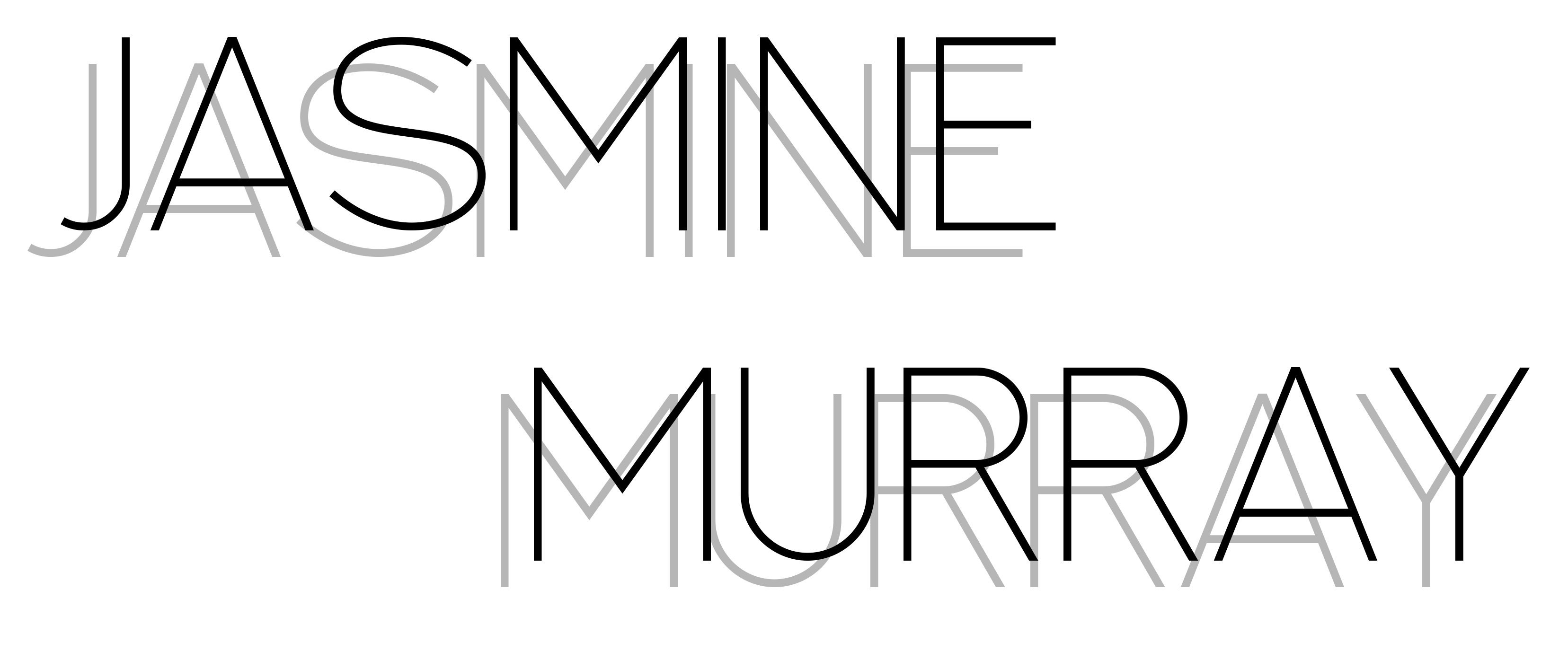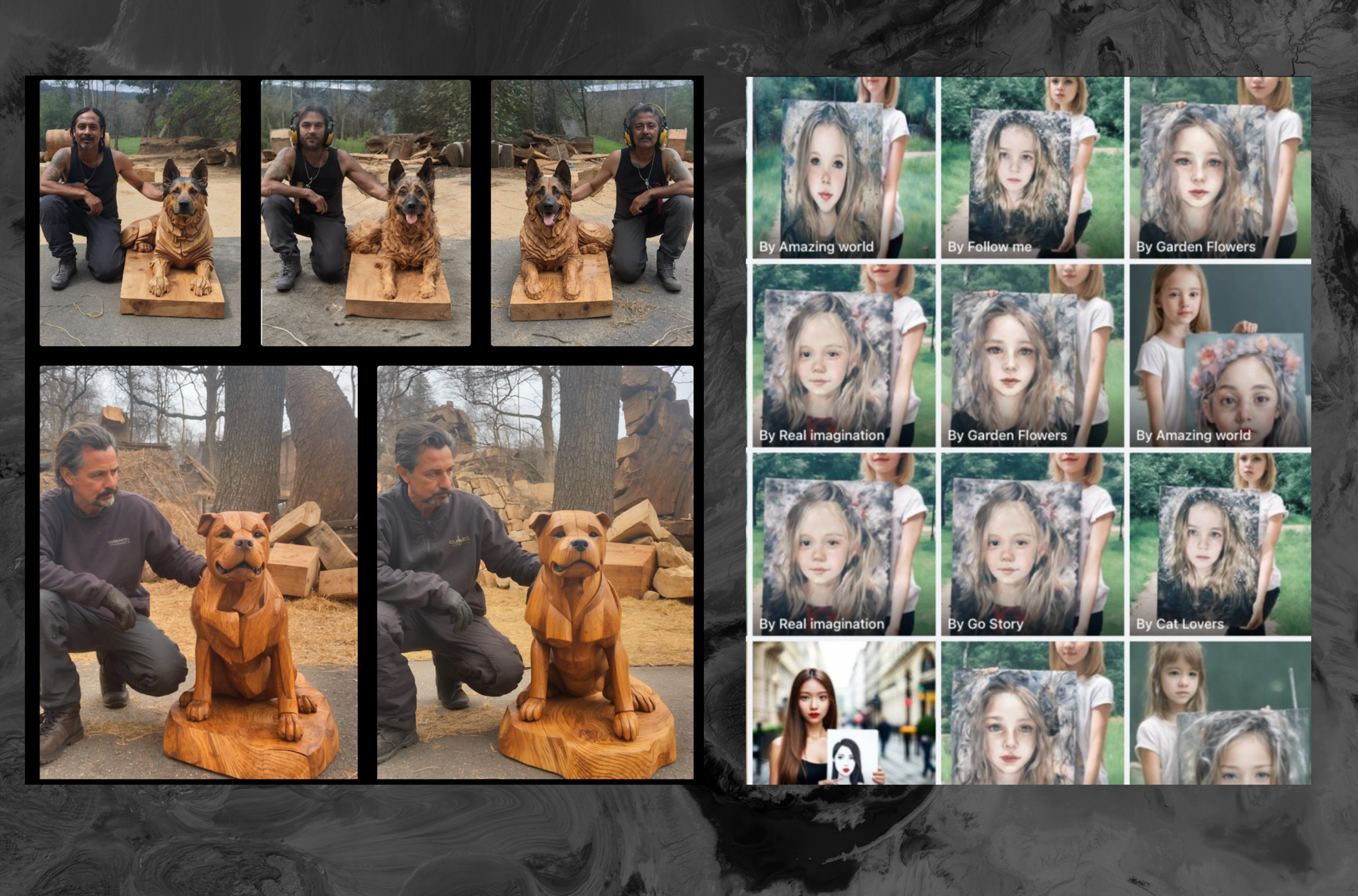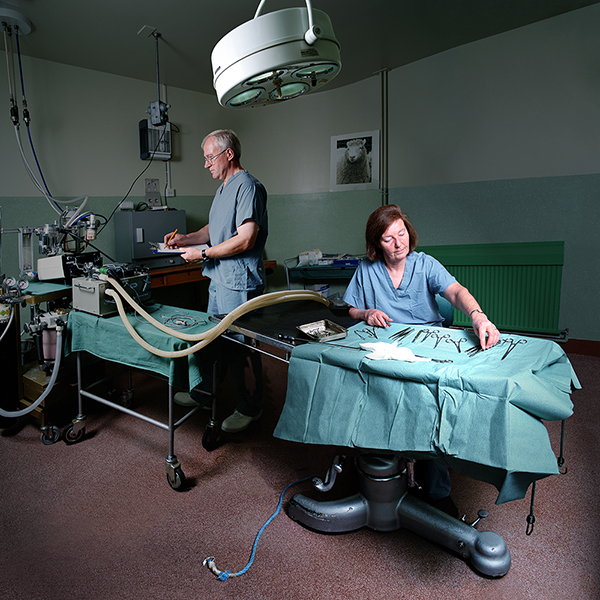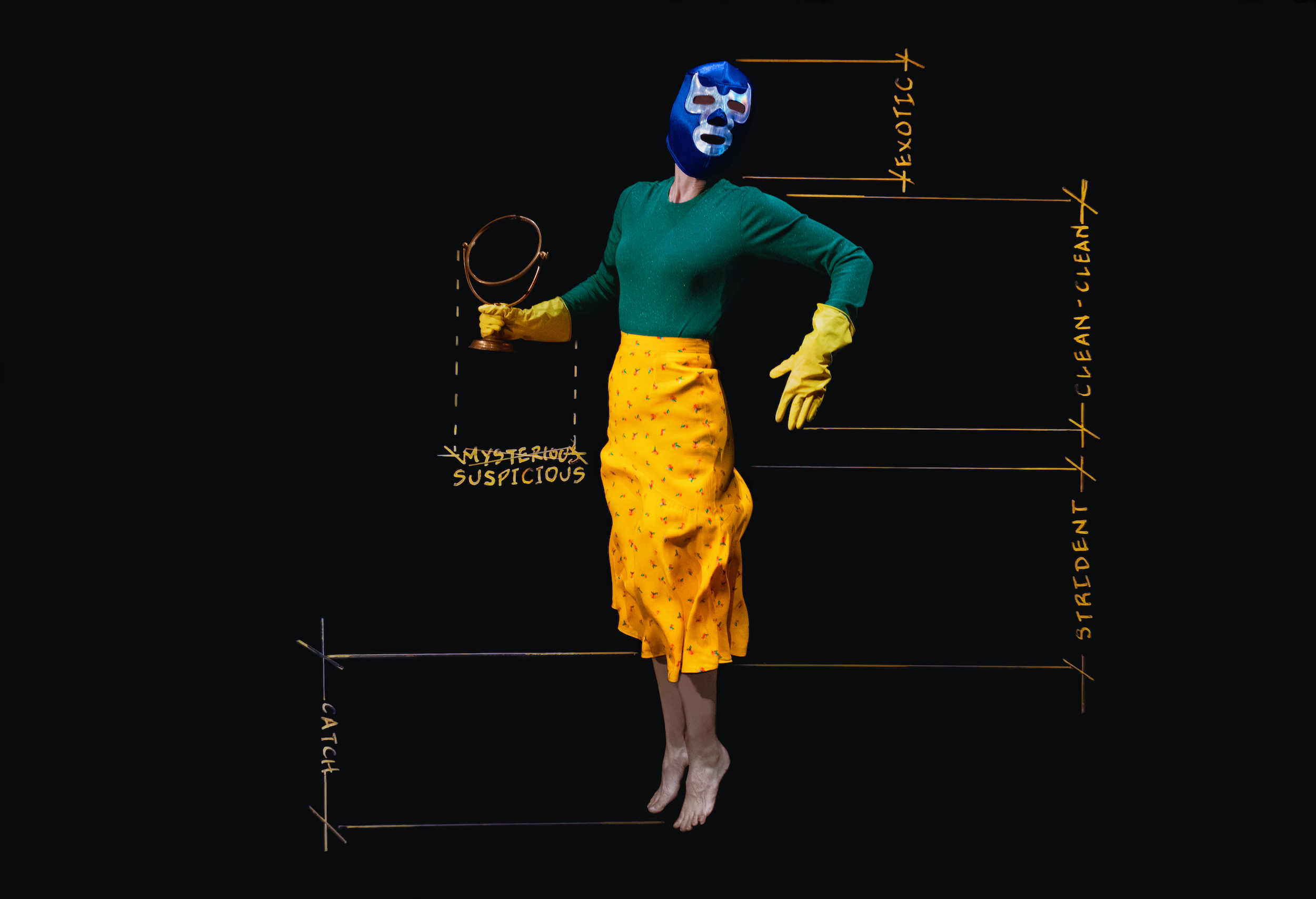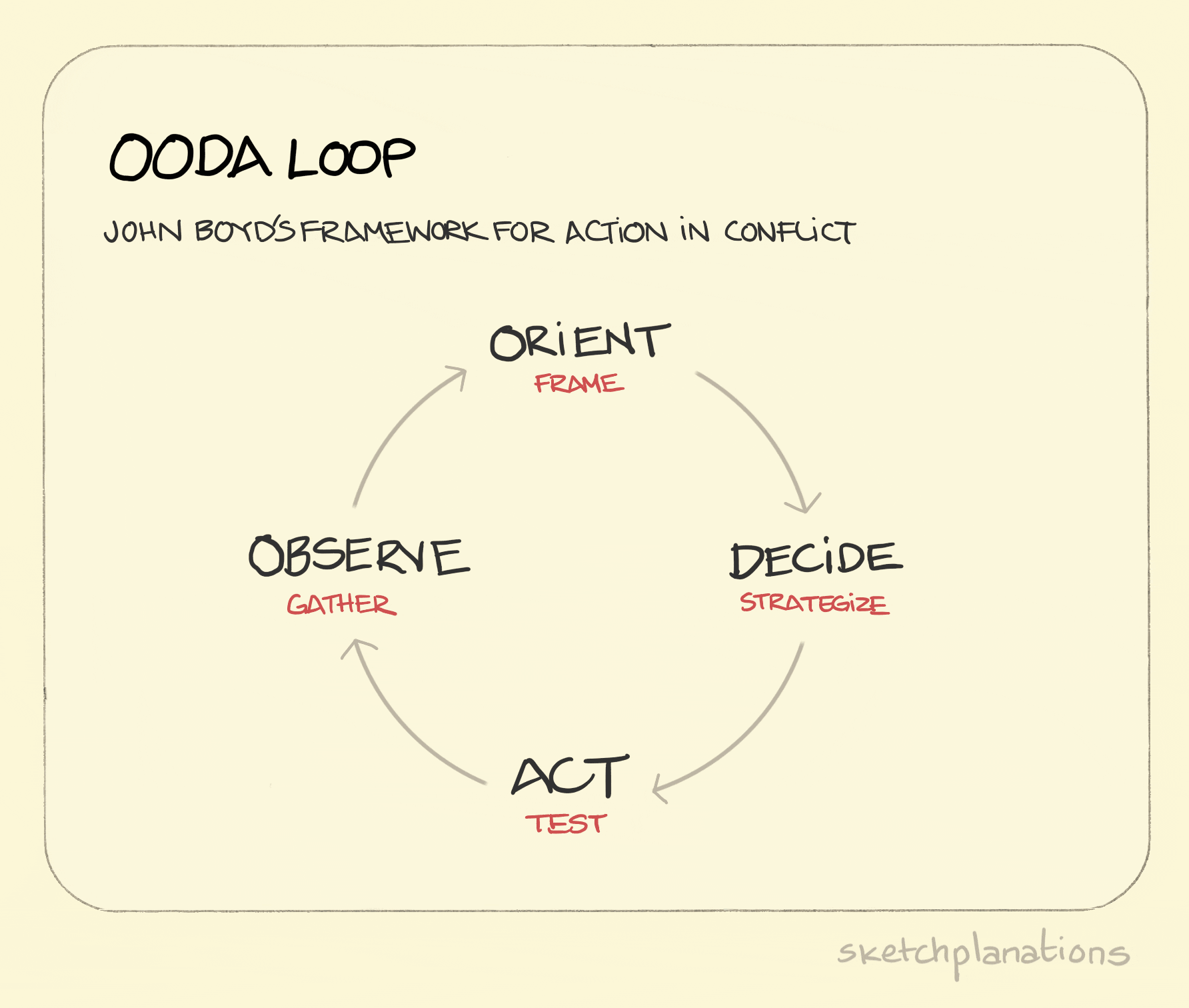“Computers can now create but they are not creative.
Ferguson, K. (2023)
To be creative, you need to have some awareness, some understanding of what you’ve done.
AIs know nothing whatsoever about the images and words they generate. “
2022 and 2023 brought about quite a few evolutions in regards to Artificial Intelligence, specifically GAN products to the point where by the time I had access to one new development, another had cropped up more advanced the one previous and I got quite a bit overwhelmed when it came to writing about what I had found out, as things got out of date relatively quickly. (To the point I began writing this particular post back in March of 2022 and found that I had to keep adding and changing, so it’s been quite the wait and a lengthy one).
2022
When I first began writing this post I set about reading about how one would set up their own GAN looking at guides and research produced by individuals working in this field, and more importantly where a lot of the model training data was being gathered from, the aspect referred to as ‘datasets’. A lot of the academic papers and research articles available at the time seemed to draw upon a dataset called ‘CelebA’ (which is interesting given developments as of January 2024, which I will unpack later in this post).
The most in-depth on the topic, was unsurprisingly by Ian Goodfellow – one of the pioneers and inventors behind OpenAI’s GAN technology that have developed Dall-E and ChatGPT as products (which are now integrated into Bing). His NIPS 2016 Tutorial on the subject of Generative Adversarial Networks provided me with a real primer in understanding that GAN is not just a sub-category of AI, but has it’s own sub-categories like iGAN (Figure 1) and IAN (Figure 2). Sub-categories whose projects have focused not just on generating an image, but aiding the user into producing what they imagine in a controlled manner (Goodfellow suggests that these projects are aimed at creating ‘art’, which is interesting given subsequent developments – particularly talks hosted by the Royal Photographic Society on the topic of GAN and whether or not it is an approved method of Art/Photography). GAN itself can be best described as functioning as a 2-player game, with one being dubbed the ‘generator’ and the other ‘ the discriminator’. The generator is the player or perhaps more aptly a counterfeiter who creates the samples using the supplied training data (the dataset) with the aim of fooling the discriminator into thinking it is a legitimate real output that is indistinguishable from the genuine input, whilst the discriminator examines the samples and determines if they are real or fake.
Back when I was studying my Masters I stated that hallmarks for noticing GAN images were strange flaws like peculiar smudges and strange, peculiar ears and whilst this hasn’t totally changed it has certainly become a lot harder to distinguish between what is a genuine photograph and what is an artificial one. This is especially true after the public releases of ChatGPT, Stable Diffusion and Midjourney amongst others, during the latter half of 2022 that some have dubbed as being the start of the AI Spring. Due to this drastic evolution, I’ve found my interest has changed somewhat – instead of wanting to create my own GAN I’ve become more fascinated by the datasets driving both the popular options as well as those which are decidedly more niche, and just how ethical these datasets are in the imagery gathered, given just how quickly GAN generation went from a more surreal painterly approach to hyper-real almost indistinguishable from a photo in output.
Figure 3 Murray, J. & Pixray Genesis (2021) Prompt: Stairway to Heaven Outcomes 1 & 2
Back in late 2021, I came across Pixray Genesis, which was one of the first GAN text to image generators to become available to the general public without a waiting list that was also free. Much like the early outcomes produced by Nvidia’s StyleGAN, pixray had a lot of interesting distortions and produced outcomes which were considered to be more painterly and in my opinion highly surrealist. Whilst it had no issue with depicting or suggesting structural architecture like stairs (Figure 3), it really struggled when it came to human depictions, creating only very simplistic abstract suggestions, lacking facial features and distinct limbs (Figure 4).
Figure 4 Murray, J. & Pixray Genesis (2021) Prompt: Migrant Mother
Shortly after finding out about Pixray I found out about Wombo Dream (Figure 5), a phone application by a Canadian AI firm which much like Pixray offered text-to-image creations in a variety of ‘styles’ such as ukiyoe, dark fantasy, steampunk, Baroque or Synthwave to name but a few. Much like Pixray, Wombo Dream really struggled with depicting a human form, although you could tell that a fair amount of training had been taken from something similar to the CelebA dataset, in that it kept depicting albeit in Abstract ‘my name’ as a black woman (I share my name with an American Idol singer) and perhaps old film posters or promotional photos as ‘The Lovers’ prompt produced an outcome that replicated and mimicked the poses common in old school 1930s and 1940s posters for romance films (e.g. The Cuban Love Song, Anna Karenina).
Figure 5 Murray, J. & Wombo Dream (2021) Prompts: Various
The outcomes produced by Pixray and Wombo Dream were not significantly different to the outcomes I got in the Spring of 2022, when I got access to DALL-E Mini by Craiyon (Figure 6) in that it appeared to handle inanimate objects or flowers better than it did humans, producing a simplistic abstraction, albeit in a square format grid of 9 outputs, often within a minimalistic colour palette.
Figure 6 Murray, J. & DALL-E Mini (2022) Prompt: Jasmine
Now admittedly the prompts I used in both DALL-E Mini, Wombo Dream and Pixray were relatively broad, and very basic in description, yet despite this fact both generators managed to produce imagery that clearly showed that it’s datasets had been trained to associate the phrases to a very narrow definition – e.g. heaven = clouds, jasmine = flower or woman. Though it was noted that around the time of me generating the outcomes on DALL-E Mini that it did strangely seem to favour inserting abstract women in saris, which an article in Rest of World seemed to think may have been down to the fact the images may have been tagged only in a language the GAN generator did not understand. (Christopher, N. 2022).
Figure 7 Murray, J. & Stable Diffusion 1.5 (2022) Prompt: A photo-realistic image of a woman with curly brown hair, blue eyes and glasses
Shortly after DALL-E Mini (Craiyon) became available, the Summer of 2022 brought about the arrival of Stable Diffusion (Figure 7), Midjourney (Figure 8) and OpenAI’s DALL-E 2 (Figure 9) in short succession. Unlike prior available to the public GAN text-to-image creators these newcomers produced outcomes that were broaching photo-realistic and had no difficulty in creating an image of a ‘human’, and this has only become easier and easier as time has gone on, to the point that some generated images have been used to manipulate the general public as a form of propaganda in regards to the ongoing wars globally (Klepper, D. 2023).

2023
Being used as propaganda is not the sole bad side of this rapid evolution of GAN image-to-text services, over the course of 2023, several court cases have gone ahead with both artists and Getty taking the Big 3 (Stable Diffusion, Midjourney & DALL-E) to court for using and creating datasets which have been trained on their scraped art data without permission (Mattei, S.E. 2023 & O’Brien, M. 2023).
Figure 9 Murray, J & DALL-E (2022) Prompts: Woman with a Camera
Talks
Throughout 2023, I attended several talks hosted by the RPS on the topic of AI. The first I attended was in April and was hosted in partnership with Shutterstock, whilst a lot of the talk seemed to be focused on selling Shutterstock’s promptography product, it did make me think the following – at what point does a photo become machine generated and stop being a photograph? After all the majority of photography these days is digitally made, using pixels which is often then taken into a editing suite such as Photoshop.

The second talk in June was hosted in partnership with Adobe, and remains available to watch on the RPS’s YouTube. Much as with Shutterstock it did feel a bit like a selling pitch to me at least, but it did add further to my thoughts of where the line is drawn, given Adobe Firefly is really just a step more than some of the products found within the current Adobe Creative Cloud suite such as face detection in Lightroom. The Adobe talk did pose some interesting developments though, as it seems like they want to make GAN created works show the credentials within the metadata in the form of Content Authenticity Initiative (CAI) as a means of showing provenance of the work, however given Adobe’s AI images have been used in the Gaza-Israel conflict as though they are photojournalist images without attribution it does lead a question of whether such inclusions within the metadata changes anything if people get duped? One only has to look at the 2023 Sony’s to see how even professional judges can be mislead over GAN imagery, with Eldagsen’s award-winning photo (Figure 10) being highlighted by the artist himself as being GAN created when refusing the prize.
A third talk was held in July with the RPS Digital Imaging, which was a more broad discussion with polling that asked about where do people draw the line and what impact if any Generative AI will have on photography. Much like the second talk, the third talk remains available for the general public to watch on the RPS’ Youtube. My main takeaway from this particular talk, was that as a bit of a purist when it comes to Adobe Software (I to this day use CS6, as I dislike the subscription based model of Creative Cloud) – I had become somewhat out of touch in how automated some people were when it came to editing, thinking little to nothing of using AI to aid with masking, facial retouching or generative fill to replace the sky.
Dawn Woolley #RebelSelves App
Due to needing PL Insurance for a pop-up exhibition of my work in Bedford, I joined AXIS and subsequently came across in one of their newsletters that Dawn Woolley was hosting an online workshop in July on her project Rebel Selves specifically an online application/website, a virtual rendition of an in-person selfie booth created by Woolley of the same name. Woolley states on her project specific instagram that Rebel Selves is a project that “… examines gender and other stereotypes in selfies and aims to use creative methods to queer selfies.” (Woolley, D. 2023)
Figure 11 Murray, J. & Woolley, D. #Rebelselves App (2023) Glitched Outputs
When it came to using the application (Figure 11), as someone who has become increasingly aware of how selfies can be abused for nefarious purposes such as deep fake porn, I wanted to see just how glitched and distorted I could go, that meant a semblance of myself (or my great-nan) remained within the photograph, but was equally far too distorted to be used in a nefarious manner.
It was interesting to hear Woolley’s perspectives on the topic of social media in relation to commodification specifically of the body within a restrictive boundary of societal expectations and gender ideals, as it is something I began to notice and recognise more after deep-diving into forums within the manosphere, that a lot of high-profile influencer types lean into accepted norms and stereotypes, a curated ideation that on reflection would not go that amiss in early 20th century marketing and advertorials.
Gender Norms
In fact in recent weeks this discourse has popped up on X (Twitter) in relation to TikTok creator Nara Smith (Figure 12), who is marketing her and her husband’s Mormon lifestyle, that appears to revolve around a lot of her videos being made in the kitchen in evening gowns. However Smith is far from alone in pushing the movement dubbed ‘tradwifes’, a term which surged in popularity around the outbreak of the pandemic and for some creators seems to link into far-right politics particularly those based in the States. This rise in content combined with the pre-existing biases within the newly developing and ever-changing world of AI, proves an interesting time for women as the ramifications of such stereotypical beliefs could set women’s right back a century, if left to brew unchecked.
Estampa

In October I caught The Photographers’ Gallery’s Screen Walks talk with Estampa (available here), a collective of programmers, artists and researchers that have been, since 2017, working with AI with a focus on neural networks and deep learning tools, starting with a series called ‘The Bad Pupil’. Subsequently they have amassed a significant body of work that focuses on the ideologies and uses of Artificial Intelligence technology.
A lot of their early work particularly those within ‘The Bad Pupil’ like Sherman/Fontcuberta use a ImageNet style generator to label or rather mislabel footage they run through it. In the case of Sherman/Fontcuberta, the two artist names pop up on faces and heads within a mid-century Chinese street video that clearly are neither Sherman nor Fontcuberta. Estampa are ultimately highlighting that Artificial Intelligence is a misnomer, as all AI is only as good as what they are trained upon – how large and diverse the dataset is in regards to it’s labelled classification as the computer can not actually see ‘visually’ like humans do.
Boris Eldagsen

In November the RPS hosted a talk with Boris Eldagsen, the artist who won the Sony’s with The Electrician, a GAN image. In the talk he mentions realising that 1990s digitalisation has ultimately become the base, the foundations of 2020s AI boom, with the data of the former, now material for training data. This is an interesting perspective and not something I had considered as 1990s digitalisation movement and early internet happened when I was a child and for the most part I have taken for granted, as being accessible at a click of the button.
So why did Eldagsen enter the image The Electrician (Figure 10) into a photo contest despite the fact he considers promptography it’s own category? In the talk he mentioned that he realized in the Autumn of 2022 that many photo competitions had not changed guidelines or rules to take into account AI being more widely used despite the AI Spring of GAN text-to-image generators. As the talk, at this point in time, isn’t accessible to the wider public, I’ve provided a quote made by Eldagsen in an interview with Foster that isn’t dissimilar to what was stated in the RPS talk:
“AI image generators enable people without photographic training to produce photo-like images that they could never have made otherwise. Inevitably, competitions are going to be flooded with AI-generated images. In my view, these competitions should have already changed their rules before October. But they didn’t. That’s why I submitted my picture to three different competitions, to hack the system and see how far I could get. All three times I was among the finalists, and now I won…”
Eldagsen, B. [in] Foster, A.(2023)
Learning that a lot of these photo contests seemed to be woefully unprepared for the arrival of GAN images was quite a surprise, more still learning the fact that the organisations didn’t particularly twig despite Eldagsen being very transparent in the process of how he made The Electrician and the companion images, only bothering to take action after he turned down the prize in person. This knowledge has really made me question all the more the ethical stand point of AI, and where individuals or big internationally renowned companies view the line to be drawn.
2024
Ethics
The past few years have brought up a lot of topics surrounding AI & Ethics, from claims that Google’s LAMBDA is sentient (Johnson, K. 2022), outright discrimination by hiring bots (Dastin, J. 2018), to Taylor Swift (Yousif, N. 2024) becoming a victim of deep fake porn with the twist that the images were made by Dall-E. Perhaps unsurprisingly, these kind of issues with AI, keep cropping up like a whack-a-mole game on steroids, have made politicians and world leaders concerned about AI being left unchecked. This has lead to attempts at regulating AI via new specific laws, and the introduction in Autumn 2023, of the world’s first AI Safety summit. This summit lead to a declaration agreed by over 20 nations to work together to identify, evaluate and regulate the risks of using AI, but it remains to be seen if this declaration will last or change anything currently considered an issue.
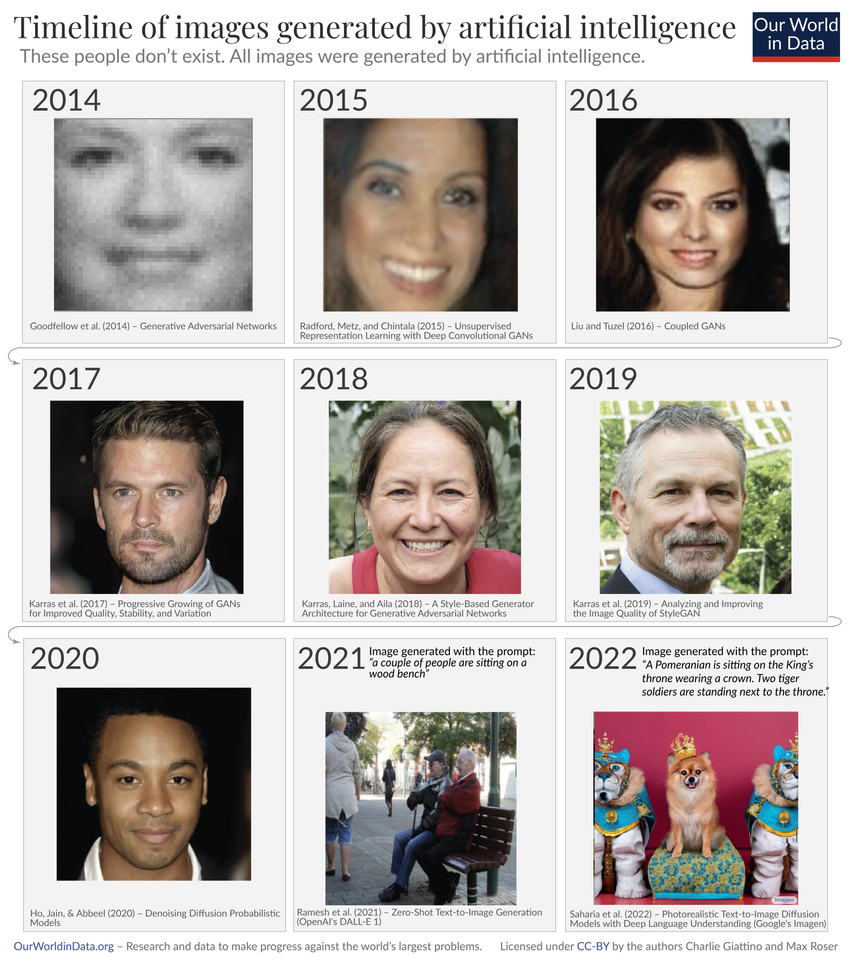
As one can observe from Figure 15 the developments of GAN images have improved in leaps and bounds since I was studying my MA, in a mere few years, with worries no longer being focused on the authenticity of a close-cropped headshot, but on photography and art as a whole. This has certainly become somewhat of an issue on Facebook in recent months with people being duped by img-to-img generated images, two big examples noticed have been ‘the dog sculptor’ and ‘my child drew this’ (Figure 16) as engagement-baits.
In the case of the dog sculptor, the sculpture was originally reality and appears to be sourced from a series of videos and photographs by chainsaw sculptor Michael Jones. Facebook isn’t the only host to have an issue with GAN images, Pinterest for example seems to have an issue with crochet, or more specifically amigurumi patterns that includes images that show the final item has been made using AI and not crocheted (Chapman, A. 2023).
More concerning, is the rapid increase of ‘undressing’ apps (Figure 17), AI painter apps that claim to turn real life images into ‘works of art’ yet marketing something more akin to ‘undressing’ (Figure 18) and AI ‘companion’ apps (Figure 19) which have in recent months been allowed to advertise as promoted posts on X (Twitter), with visuals that are stereotypical pornified imagery of women that is designed for the male gaze to objectify.
Figure 18 Murray, J. (2023) Screenshots of Promoted tweets of an AI painter
However even without arguably questionable in-motive apps, nefarious users can circumvent round apps such as Microsoft Designer (the app responsible for the viral Swift images) and make explicit images or images of celebrities by changing the prompts with mis-spellings, and instead of writing explicit sexual acts describing instead objects, colours and compositions that are suggestive of sexual acts.
Figure 19 Murray, J. (2023) Screenshots of Promoted Tweets of AI Companion Apps
Other examples recreate 9/11 or jailbreak LLM models such as ChatGPT to be sexually suggestive or repeat itself to the point training data is leaked. The latest in the long line of leaks comes from a claim by ArsTechnica who have claimed that ChatGPT is leaking passwords from private conversations it has had with other users. It does make you wonder if the leak is not so much a leak as what Shumailov, I. et al (2023) theorised as model collapse.
Figure 20 Murray, J. (2024) Screenshots of the account responsible for Taylor Swift Images
In regards to Swiftgate I managed to do a bit of digging when the images first went viral and found out a user going by the handle @xCharlotteAI (Figure 20) appeared to be the origin source for NSFW AI Images. The X accounts for this user and their website have since been removed, but they still have a presence on Youtube, and on Instagram, the latter of which they appear to have two accounts, both marketing the content they were peddling on their website, which interestingly enough appeared to only charge in GBP. Given my previous research finding a link with a deep nude generator being designed and platformed by someone based in the UK, I have to wonder if the individual behind this account is one and same. Sadly one of the blue tick users who reposted the images has simply gone private and doesn’t appear to have faced any ramifications for sharing the deep fake nudes.
Another concern is Thiel’s research for Stanford’s Internet Observatory, which uncovered that some training data for the likes of Stable Diffusion like LAION-5B had thousands of images of CSAM (Child Sexual Abuse Material) due to the nature of how the data was obtained something he had previously highlighted as being an issue with generative ML models (unlike early AI which relied on ImageNet, which was trained by humans manually uploading training material, LAION-5B simply trawled and scraped the web meaning a fair amount of it’s training data was not obtained legally).
References
Figures
Figure 1 Zhu, J. et al (2016) Generative Visual Manipulation on the Natural Image Manifold. [Online] Available from: https://www.youtube.com/watch?v=9c4z6YsBGQ0 [Accessed 16/03/2022]
Figure 2 Brock, A. et al. (2016) Neural Photo Editing with Introspective Adversarial Networks. [Online] Available from: https://www.youtube.com/watch?v=FDELBFSeqQs [Accessed 18/03/2022]
Figure 3 Murray, J. & Pixray Genesis (2021) Prompt: Stairway to Heaven Outcomes 1 & 2
Figure 4 Murray, J. & Pixray Genesis (2021) Prompt: Migrant Mother
Figure 5 Murray, J. & Wombo Dream (2021) Prompts: Various
Figure 6 Murray, J. & DALL-E Mini (2022) Prompt: Jasmine
Figure 7 Murray, J. & Stable Diffusion 1.5 (2022) Prompt: A photo-realistic image of a woman with curly brown hair, blue eyes and glasses
Figure 8 Murray, J. & Midjourney (2022) Prompt: Feminist breaking free from societal shackles
Figure 9 Murray, J & DALL-E (2022) Prompts: Woman with a Camera
Figure 10 Eldagsen, B. (2023) The Electrician. [Online] Available from: https://www.artnews.com/art-news/news/ai-generated-image-world-photography-organization-contest-artist-declines-award-1234664549/ [Accessed 28/01/2024]
Figure 11 Murray, J. & Woolley, D. #Rebelselves App (2023) Glitched Outputs
Figure 12 Anya, U. (2024) Twitter Post comparing marketing photos from the mid-century (left) against Tiktok influencer Nara Smith. [Online] Available from: https://twitter.com/UjuAnya/status/1749419531678720351 [Accessed 29/01/2024]
Figure 13 Estampa (2018) Sherman/Fontcuberta. [Online] Available from: https://tallerestampa.com/en/estampa/sherman-fontcuberta/ [Accessed 29/01/2024]
Figure 14 Eldagsen, B. (2023) Psychoanalysis Gone Wrong. [Online] Available from: https://www.eldagsen.com/pseudomnesia3/ [Accessed 29/01/2024]
Figure 15 Roser, M. & Giattino, C. (2023) Timeline of images generated by artificial intelligence. [Online] Available from: https://ourworldindata.org/brief-history-of-ai [Accessed 30/01/2024]
Figure 16 Koebler, J. (2023) Screenshots from Facebook. [Online] Available from: https://www.404media.co/facebook-is-being-overrun-with-stolen-ai-generated-images-that-people-think-are-real/ [Accessed 30/01/2024]
Figure 17 Beau (2023) X Screenshot Ad. [Online] Available from: https://twitter.com/beausecurity/status/1735424295638049035?s=20 [Accessed 30/01/2024]
Figure 18 Murray, J. (2023) Screenshots of Promoted tweets of an AI painter
Figure 19 Murray, J. (2023) Screenshots of Promoted Tweets of AI Companion Apps
Figure 20 Murray, J. (2024) Screenshots of the account responsible for Taylor Swift Images
Bibliography
Adaloglou, N. (2020) GANs in computer vision – Introduction to generative learning [Online] Available from: https://theaisummer.com/gan-computer-vision/ [Accessed 16/04/2022]
Adobe (2023-) Content Authenticity Initiative. [Online] Available from: https://contentauthenticity.org/ [Accessed 22/12/2023]
Alba, D. & D’Anastasio, C. (2023) Bloomberg: Google and Microsoft Are Supercharging AI Deepfake Porn. [Online] Available from: https://www.bloomberg.com/news/articles/2023-08-24/google-microsoft-tools-behind-surge-in-deepfake-ai-porn [Accessed 30/01/2024]
Al-Sibai (2023) The Byte: GOOGLE DEEPMIND CEO SAYS AI MAY BECOME SELF-AWARE. [Online] Available from: https://futurism.com/the-byte/google-deepmind-ceo-self-aware-ai [Accessed 08/01/2024]
Anderson, T. (2024) Dev Class: AI assistance is leading to lower code quality, claim researchers. [Online] Available from: https://devclass.com/2024/01/24/ai-assistance-is-leading-to-lower-code-quality-claim-researchers/?td=rt-9cp [Accessed 30/01/2024]
Axis (1991-) [Online] Available from: https://www.axisweb.org/ [Accessed 29/11/2023]
Belanger, A. (2024) arsTechnica: Drastic moves by X, Microsoft may not stop spread of fake Taylor Swift porn. [Online] Available from: https://arstechnica.com/tech-policy/2024/01/drastic-moves-by-x-microsoft-may-not-stop-spread-of-fake-taylor-swift-porn/ [Accessed 30/01/2024]
Belanger, A. (2024) arsTechnica: Toxic Telegram group produced X’s X-rated fake AI Taylor Swift images, report says. [Online] Available from: https://arstechnica.com/tech-policy/2024/01/fake-ai-taylor-swift-images-flood-x-amid-calls-to-criminalize-deepfake-porn/?itm_source=parsely-api [Accessed 29/01/2024]
Bok, V. & Langr, J. (2019) GANs In Action: Deep learning with Generative Adversarial Networks. New York; Manning Publications Co.
Brock, A. et al. (2017) Neural Photo Editing with Introspective Adversarial Networks. [Online] Available from: https://arxiv.org/pdf/1609.07093.pdf [Accessed 19/03/2022]
Brundage, M. et al. (2018) The Malicious Use of Artificial Intelligence: Forecasting, Prevention, and Mitigation. [Online] Available from: https://arxiv.org/pdf/1802.07228.pdf [Accessed 10/04/2022]
Butlin, P. et al (2023) Consciousness in Artificial Intelligence: Insights from the Science of Consciousness. [Online] Available from: https://arxiv.org/pdf/2308.08708.pdf [Accessed 30/01/2024]
Chapman, A. (2023) Medium: AI Grifters are Coming For Crochet Pinterest. [Online] Available from: https://medium.com/@alex.chapman93/ai-grifters-are-coming-for-crochet-pinterest-24978d72018a [Accessed 30/01/2024]
Chin, M. (2023) ArtNet: Artists and Illustrators Are Suing Three A.I. Art Generators for Scraping and ‘Collaging’ Their Work Without Consent. [Online] Available from: https://news.artnet.com/art-world/class-action-lawsuit-ai-generators-deviantart-midjourney-stable-diffusion-2246770 [Accessed 24/10/2023]
Christopher, N. (2022) Rest of World: DALL·E mini has a mysterious obsession with women in saris. [Online] Available from: https://restofworld.org/2022/dall-e-mini-women-in-saris/ [Accessed 29/08/2022]
Claburn, T. (2024) The Register: What is Model Collapse and how to avoid it. [Online] Available from: https://www.theregister.com/2024/01/26/what_is_model_collapse/?td=rt-9cp [Accessed 30/01/2024]
Claburn, T. (2024) The Register: Simon Willison interview: AI software still needs the human touch. [Online] Available from: https://www.theregister.com/2024/01/24/willison_ai_software_development/?td=rt-9cp [Accessed 30/01/2024]
Claburn, T. (2024) The Register: AI is changing search, for better or for worse. [Online] Available from: https://www.theregister.com/2024/01/30/ai_is_changing_search/ [Accessed 30/01/2024]
Cole, S. (2023) 404: Bing Is Generating Images of SpongeBob Doing 9/11. [Online] Available from: https://www.404media.co/bing-is-generating-images-of-spongebob-doing-9-11/ [Accessed 30/01/2024]
Cole, S. (2023) 404: DIY Chatbots Unleash Large Language Models’ Repressed Sexuality. [Online] Available from: https://www.404media.co/chub-ai-characters-jailbreaking-nsfw-chatbots/ [Accessed 30/01/2024]
Dastin, J. (2018) Reuters: Insight – Amazon scraps secret AI recruiting tool that showed bias against women. [Online] Available from: https://www.reuters.com/article/amazoncom-jobs-automation/insight-amazon-scraps-secret-ai-recruiting-tool-that-showed-bias-against-women-idUSL2N1WQ1E9/ [Accessed 30/01/2024]
Davies, C. et al (2024) The Guardian: Schoolgirl, 14, found dead after alleged bullying by boys, London inquest hears. [Online] Available from: https://www.theguardian.com/uk-news/2024/jan/23/schoolgirl-14-found-dead-after-alleged-bullying-by-boys-london-inquest-hears [Accessed 30/01/2024]
Dayma, B. et al (2022-) DALL-E Mini by Craiyon. [Online] Available from: https://huggingface.co/spaces/dalle-mini/dalle-mini [Accessed 23/04/2022]
Department for Science, Innovation and Technology (2023) Frontier AI: capabilities and risks – discussion paper. [Online] Available from: https://www.gov.uk/government/publications/frontier-ai-capabilities-and-risks-discussion-paper [Accessed 30/01/2024]
Eldagsen, B. [in] Foster, A. (2023) Talking Pictures: ‘Boris Eldagsen: The Woman Who Never Was‘. [Online] Available from: https://talking-pictures.net.au/2023/04/01/boris-eldagsen-the-woman-who-never-was/ [Accessed 29/12/2023]
Estampa (2017-) [Online] Available from: https://tallerestampa.com/en/ [Accessed 04/10/2023]
European Parliament (2023) Press Release: Artificial Intelligence Act: deal on comprehensive rules for trustworthy AI. [Online] Available from: https://www.europarl.europa.eu/news/en/press-room/20231206IPR15699/artificial-intelligence-act-deal-on-comprehensive-rules-for-trustworthy-ai [Accessed 14/01/2024]
Ferguson, K. (2023) AI and Image Generation (Everything is a Remix Part 4). [Online] Available from: https://www.youtube.com/watch?v=rswxcDyotXA [Accessed 06/06/2023]
Freeman, H. (2020) The Guardian: ‘Tradwives’: the new trend for submissive women has a dark heart and history. [Online] Available from: https://www.theguardian.com/fashion/2020/jan/27/tradwives-new-trend-submissive-women-dark-heart-history [Accessed 29/01/2024]
Gault, M. (2023) Vice: Adobe Is Selling AI-Generated Images of Violence in Gaza and Israel. [Online] Available from: https://www.vice.com/en/article/3akj3k/adobe-is-selling-fake-ai-generated-images-of-violence-in-gaza-and-israel [Accessed 24/01/2024]
Goodfellow, I. (2017) NIPS 2016 Tutorial: Generative Adversarial Networks. [Online] Available from: https://arxiv.org/pdf/1701.00160.pdf [Accessed 12/03/2022]
Goodin, D. (2024) arsTechnica: ChatGPT is leaking passwords from private conversations of its users, Ars reader says. [Online] Available from: https://arstechnica.com/security/2024/01/ars-reader-reports-chatgpt-is-sending-him-conversations-from-unrelated-ai-users/ [Accessed 30/01/2024]
Growcott, M. (2023) Petapixel: Photo Competition Slammed for ‘World’s First’ AI Image Contest. [Online] Available from: https://petapixel.com/2023/10/10/photo-competition-slammed-for-worlds-first-ai-image-contest/ [Accessed 27/01/2024]
Gu, J; Liu, L; Wang, P. & Theobalt, C. (2021) StyleNeRF: A Style-based 3D-Aware Generator for High-resolution Image Synthesis. [Online] Available from: http://jiataogu.me/style_nerf/ [Accessed 12/03/2022]
Jimenez, D. (2024) Digg: An Alleged Mormon Propagandist, And More Of This Week’s ‘One Main Character’. [Online] Available from: https://digg.com/one-main-character/link/one-main-character-twitter-mormon-nara-smith-taylor-swift-dating [Accessed 29/01/2024]
Johnson, K. (2022) Wired: LaMDA and the Sentient AI Trap. [Online] Available from: https://www.wired.com/story/lamda-sentient-ai-bias-google-blake-lemoine/ [Accessed 13/12/2023]
Kana, M. (2020) Towards Data Science: Generative Adversarial Network (GAN) for Dummies — A Step By Step Tutorial. [Online] Available from: https://towardsdatascience.com/generative-adversarial-network-gan-for-dummies-a-step-by-step-tutorial-fdefff170391 [Accessed 12/03/2022]
Klepper, D. (2023) AP News: Fake babies, real horror: Deepfakes from the Gaza war increase fears about AI’s power to mislead. [Online] Available from: https://apnews.com/article/artificial-intelligence-hamas-israel-misinformation-ai-gaza-a1bb303b637ffbbb9cbc3aa1e000db47 [Accessed 22/12/2023]
Koebler, J. (2023) 404: Facebook Is Being Overrun With Stolen, AI-Generated Images That People Think Are Real. [Online] Available from: https://www.404media.co/facebook-is-being-overrun-with-stolen-ai-generated-images-that-people-think-are-real/ [Accessed 30/01/2024]
Koebler, J. (2023) 404: Twitter Now Showing Ads For Nonconsensual ‘AI Undress’ Apps. [Online] Available from: https://www.404media.co/twitter-x-now-showing-ads-for-nonconsensual-ai-undress-apps/ [Accessed 30/01/2024]
Lanxon, N. (2024) Bloomberg: About the Deepfake Tech Behind the Bogus Taylor Swift Images. [Online] Available from: https://www.bloomberg.com/news/articles/2024-01-26/why-taylor-swift-ai-generated-deepfake-images-raise-wider-worries?leadSource=uverify%20wall [Accessed 30/01/2024]
Liscomb, M. (2024) Buzzfeed: “Trad Wives Be Like”: This Woman Is Absolutely Roasting The Alt-Right Movement That Wants To See All Women Become Stay-At-Home Wives. [Online] Available from: https://www.buzzfeed.com/meganeliscomb/trad-wife-parodies-tiktok [Accessed 29/01/2024]
Maiberg, E. (2023) 404: $260 Million AI Company Releases Undeletable Chatbot That Gives Detailed Instructions on Murder, Ethnic Cleansing. [Online] Available from: https://www.404media.co/260-million-ai-company-releases-chatbot-that-gives-detailed-instructions-on-murder-ethnic-cleansing/ [Accessed 30/01/2024]
Maiberg, E. & Cole, S. (2024) 404: AI-Generated Taylor Swift Porn Went Viral on Twitter. Here’s How It Got There. [Online] Available from: https://www.404media.co/ai-generated-taylor-swift-porn-twitter/ [Accessed 30/01/2024]
Mattei, S.E. (2023) Art in America: Artists Are Suing Artificial Intelligence Companies and the Lawsuit Could Upend Legal Precedents Around Art. [Online] Available from: https://www.artnews.com/art-in-america/features/midjourney-ai-art-image-generators-lawsuit-1234665579/ [Accessed 25/05/2023]
Murphy, M. (2023) Bloomberg: Apps That Use AI to Undress Women in Photos Soaring in Use. [Online] Available from: https://www.bloomberg.com/news/articles/2023-12-08/ai-nudify-apps-that-undress-women-in-photos-soaring-in-use [Accessed 29/01/2024]
O’Brien, M. (2023) APNews: Photo giant Getty took a leading AI image-maker to court. Now it’s also embracing the technology. [Online] Available from: https://apnews.com/article/getty-images-artificial-intelligence-ai-image-generator-stable-diffusion-a98eeaaeb2bf13c5e8874ceb6a8ce196 [Accessed 11/10/2023]
O’Brien, S. (2023) IEEE: AiArt: Why Some Artists Are Furious About AI-Produced Art. [Online] Available from: https://www.computer.org/publications/tech-news/trends/artists-mad-at-ai [Accessed 04/01/2024]
Oremus, W. & Verma, P. (2023) The Washington Post: These look like prizewinning photos. They’re AI fakes. [Online] Available from: https://www.washingtonpost.com/technology/2023/11/23/stock-photos-ai-images-controversy/ [Accessed 28/01/2024]
Osbourne Clarke (2023) What is the latest on international, EU and UK initiatives to regulate artificial intelligence? [Online] Available from: https://www.osborneclarke.com/insights/what-latest-international-eu-and-uk-initiatives-regulate-artificial-intelligence [Accessed 28/01/2024]
Pearson, J. (2023) Vice News: Major Photography Prize Winner Reveals Image Is AI-Generated, Rejects Award. [Online] Available from: https://www.vice.com/en/article/dy3vxy/sony-world-photography-awards-ai-generated [Accessed 23/06/2023]
Pearson, J. (2023) Vice News: X Lags Behind TikTok, Meta In Restricting ‘Nudify’ Apps for Non-Consensual AI Porn. [Online] Available from: https://www.vice.com/en/article/m7b4b3/x-lags-behind-tiktok-meta-in-restricting-nudify-apps-for-non-consensual-ai-porn?ref=404media.co [Accessed 30/01/2024]
Quanch, K. (2024) The Register: Everyone’s suing AI over text and pics. But music? You ain’t seen nothing yet. [Online] Available from: https://www.theregister.com/2024/01/08/copyright_music_ai/?td=rt-9cp [Accessed 30/01/2024]
Quanch, K. (2024) The Register: If you use AI to teach you how to code, remember you still need to think for yourself. [Online] Available from: https://www.theregister.com/2024/01/27/ai_coding_automatic/?td=rt-9cp [Accessed 30/01/2024]
Quanch, K. (2024) The Register: It took Taylor Swift deepfake nudes to focus Uncle Sam, Microsoft on AI safety. [Online] Available from: https://www.theregister.com/2024/01/30/nudes_taylor_swift_action/ [Accessed 30/01/2024]
Roser, M. (2022) – Our World In Data: “The brief history of artificial intelligence: The world has changed fast – what might be next?” [Online] Available from: https://ourworldindata.org/brief-history-of-ai [Accessed 30/01/2024]
Royal Photographic Society (2023-) Artificial Intelligence and the RPS. [Online] Available from: https://rps.org/AI [Accessed 28/01/2024]
Royal Photographic Society (2023-) Photography and AI 2 with Adobe. [Online] Available from: https://www.youtube.com/watch?v=7YjWxWmnS2c [Accessed 28/01/2024]
RPS Digital Imaging (2023) RPS Digital Imaging: Blend Mode : Hard Mix with Joe Houghton and Simon Newlyn. [Online] Available from: https://www.youtube.com/watch?v=TYgjJh1RDzo [Accessed 29/01/2024]
Saliba, E. (2023) abcNews: Sharing photos of your kids? Maybe not after you watch this deepfake ad. [Online] Available from: https://abcnews.go.com/GMA/Family/sharing-photos-kids-after-watch-deepfake-ad/story?id=101730561 [Accessed 30/11/2023]
Schrader, A. (2023) ArtNet: In a Blow for Artists, a Federal Judge Has Sided With Three A.I. Companies in a Copyright Dispute. [Online] Available from: https://news.artnet.com/art-world/federal-judge-sides-with-ai-companies-in-artists-copyright-dispute-2387654 [Accessed 20/12/2023]
Shakhadri, S. (2021) Analytics Vidhya: Generate Your Own Dataset using GAN. [Online] Available from: https://www.analyticsvidhya.com/blog/2021/04/generate-your-own-dataset-using-gan/ [Accessed 12/03/2022]
Shumailov, I. et al. (2023) The Curse of Recursion: Training on Generated Data Makes Models Forget. [Online] Available from: https://arxiv.org/abs/2305.17493 [Accessed 30/01/2024]
Tenbarge, K. (2024) NBC News: Google and Bing put nonconsensual deepfake porn at the top of some search results. [Online] Available from: https://www.nbcnews.com/tech/internet/google-bing-deepfake-porn-image-celebrity-rcna130445 [Accessed 12/01/2024]
Tenbarge, K. (2024) NBC News: Teen Marvel star speaks out about sexually explicit deepfakes: ‘Why is this allowed?’. [Online] Available from: https://www.nbcnews.com/tech/misinformation/teen-marvel-star-xochitl-gomez-speaks-deepfake-rcna134753 [Accessed 30/01/2024]
Thiel, D. (2023) Identifying and Eliminating CSAM in Generative ML Training Data and Models. [Online] Available from: https://doi.org/10.25740/kh752sm9123. [Accessed 28/01/2024]
Tiku, N. (2022) The Washington Post: The Google engineer who thinks the company’s AI has come to life. [Online] Available from: https://www.washingtonpost.com/technology/2022/06/11/google-ai-lamda-blake-lemoine/ [Accessed 07/05/2023]
The Photographers’ Gallery (2023) Screen Walk with Estampa. [Online] Available from: https://www.youtube.com/watch?v=Ofv7y_XIuHs [Accessed 04/10/2023]
UK Government (2023) Policy Paper: AI regulation: a pro-innovation approach. [Online] Available from: https://www.gov.uk/government/publications/ai-regulation-a-pro-innovation-approach [Accessed 27/01/2024]
Unesco (2023) Artificial Intelligence: examples of ethical dilemmas. [Online] Available from: https://www.unesco.org/en/artificial-intelligence/recommendation-ethics/cases [Accessed 17/7/2023]
Walsh, D. (2023) MIT Sloan: The legal issues presented by generative AI. [Online] Available from: https://mitsloan.mit.edu/ideas-made-to-matter/legal-issues-presented-generative-ai [Accessed 09/09/2023]
Whang, O. (2023) The New York Times: How to Tell if Your A.I. Is Conscious. [Online] Available from: https://www.nytimes.com/2023/09/18/science/ai-computers-consciousness.html [Accessed 18/01/2024]
White, T. (2021-) Dribnet’s Pixray. [Online] Available from: https://pixray.gob.io/ [Accessed 20/11/2021]
Wombo (2021-) Dream. [Online] Available from: https://dream.ai/ [Accessed 29/12/2021]
Woolley, D. (2023) #RebelSelves. [Online] Available from: https://rebelselves.netlify.app/#/info [Accessed 26/07/2023]
Woolley, D. (2023) RebelSelves Instagram. [Online] Available from: https://www.instagram.com/RebelSelves [Accessed 19/12/2023]
Yousif, N. (2024) BBC News: X blocks searches for Taylor Swift after explicit AI images of her go viral. [Online] Available from: https://www.bbc.co.uk/news/world-us-canada-68123671 [Accessed 30/01/2024]
